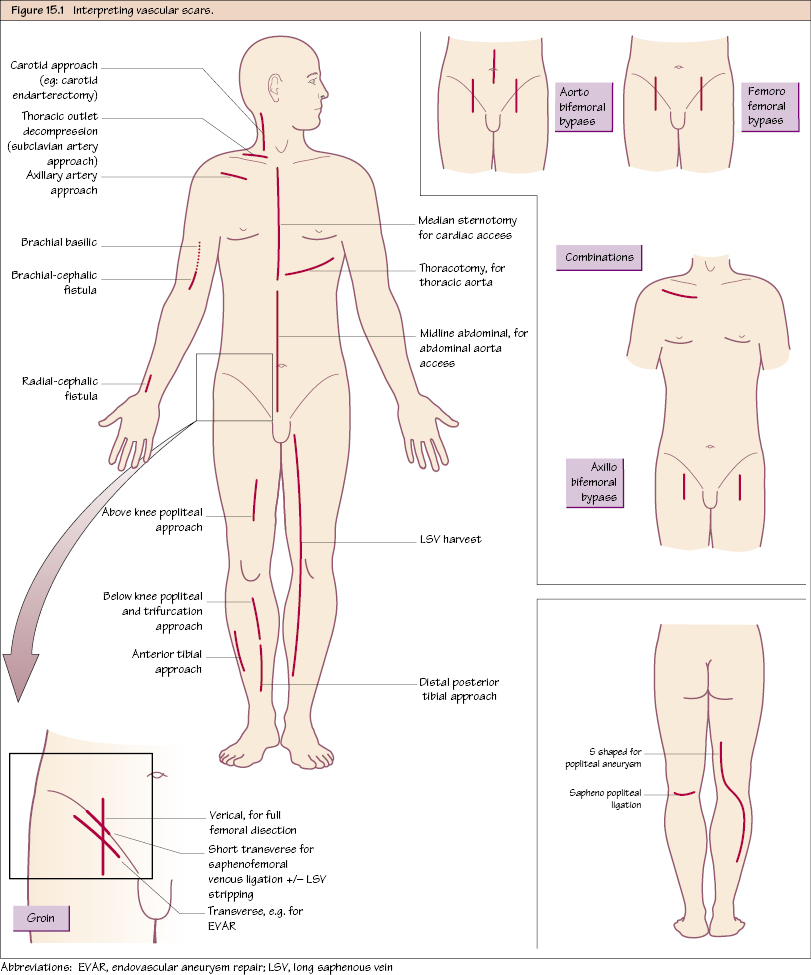Interpreting Vascular Scars Vascular scars can be very confusing to the uninitiated. No scar is pathognomonic of a particular operation, and almost endless permutations of scars can exist together. Often two geographically quite distant scars can relate to the same operation because a bypass graft may be tunnelled between them (in these cases, always palpate between the scars because sometimes grafts are tunnelled subcutaneously). Gradually you will build up pattern recognition; however, it is not always possible to guess the exact operation from the scars, especially if the patient has had multiple trips to theatre. Oblique incision in line with anterior border of sternocleidomastoid: Transverse incision above clavicle extending medially over sternocleidomastoid: Median sternotomy: Infraclavicular transverse incision: Small stab incisions in the third or fourth intercostal spaces: Oblique incision in any of the left intercostal spaces: Long midline:

Overview
Neck
Chest
Abdomen
Stay updated, free articles. Join our Telegram channel

Full access? Get Clinical Tree


